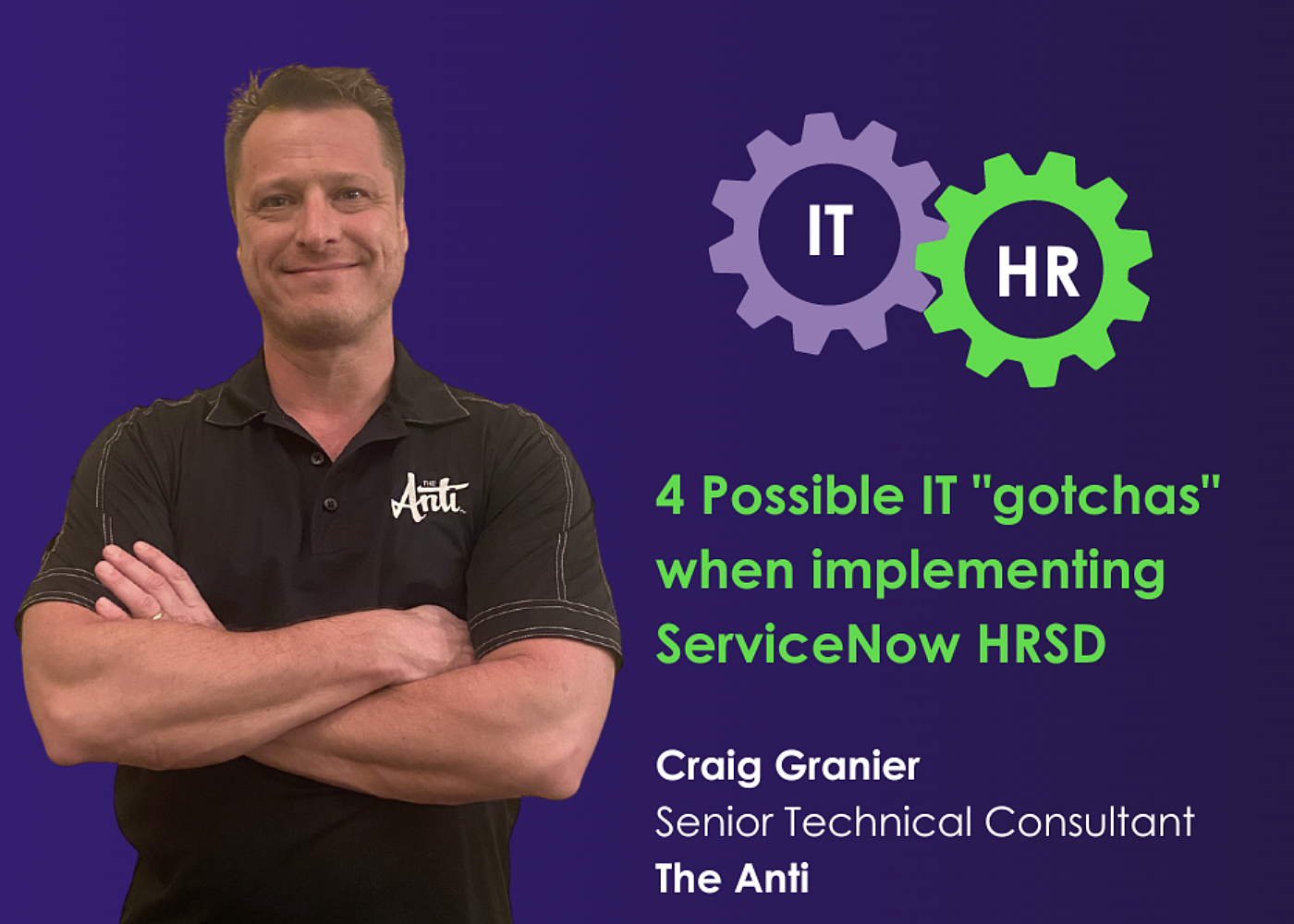4 Possible IT "Gotchas" when Implementing ServiceNow HRSD

It is a common scenario for IT to be the first department to implement ServiceNow. This may have been done with little of an impact on other groups, like HR, using ServiceNow for their needs.
Below are 4 areas you should consider before planning an HRSD implementation when IT has already implemented ServiceNow.
Branding & Marketing
In some instances, customer’s IT departments (who may have been the initial implementation for ServiceNow) may have named their instance something like “abc-it-support.service-now.com.” In these cases, you can request that ServiceNow rename your instance via the HI Support portal.
ServiceNow allows customers to use corporate email addresses/accounts for inbound and outbound email communication. If emails from your system look something like “abcITSupport@yourcompany.com,” then you should be aware that email notifications generated from HR cases and tasks will be sent from this email address. Fortunately, this can be addressed easily. ServiceNow allows for receiving emails from various email accounts, which enables you to set up one or more email accounts as needed to support your HR Teams’ intake of cases.
Core Data (Departments, Locations, etc.)
Data such as employee information, company structure, and locations may have already been loaded as a part of IT’s integration. In this case, it would be wise to consult your ServiceNow owner or admins to find out where this data is being sourced from. It is best practice to have this data be fed into ServiceNow via integration from a “source of truth.” A source of truth is the authoritative source for company data. In reviewing core data that has been loaded into ServiceNow, our goal is to assess whether that is the “true” data that will meet our needs.
If we find that the data is incomplete and will not meet HR’s needs, we then need to consider either replacing the original data with data from a source of truth or adding HR data to what IT has already imported. The risk in adding to current data is the risk of duplicate data. For example, two location records for the same physical location…one from IT and one from HR.
Knowledge Management
Chances are, you want to use Knowledge Management. It is a great way to empower employees to find solutions on their own without having to open cases or send emails. The power of a well-implemented and well-curated knowledge base is easily understandable. Your IT peers probably know this too and have already implemented Knowledge Management in some form.
All users of the Knowledge Management application are using the same application. It is wise to have a review of your current configuration of Knowledge in ServiceNow because, while HR and IT can coexist very easily in Knowledge Management with the use of dedicated knowledge bases for each department, IT may have made some customizations to suit their needs. If that is the case, you and your implementation partner should work with IT so that all your needs are met while trying to minimize the impact of HR’s implementation.
Employee Center Portal
Historically, HR and IT had separate portals. With its introduction of Employee Center, ServiceNow has provided employees with a one-stop-shop to request service. It is common for many IT organizations to use the IT-specific portal, especially if they implemented it prior to the Employee Center portal’s introduction.
In the event that IT is using the IT portal, it is suggested that HR use the Employee Center or Employee Center Pro as its portal. That’s the easy scenario. When IT is ready, they can move to the Employee Center portal, so employees have one singular portal to use for all of their HR and IT needs.
What if IT is already using the Employee Center portal? In that case, HR will need to take what IT has done as its starting point, and, while working with IT on the design and requirements, come up with a design that meets the needs of both departments.
Once a common design is agreed upon, HR will need to define its taxonomy. Taxonomy is a feature that was introduced with the Employee Center portal to give different departments some autonomy with how content is presented to its customers. Content can include catalog items to request service, knowledge articles, and links to external systems (like your payroll processor).
There you have it. The keys to a strong implementation before you even begin. It’s difficult to provide a seamless experience for two separate departments that need different things from the same software, but if you anticipate the problems, you can mitigate the problems.
A bit about Craig: Craig has more than two decades of ITSM delivery experience and ten years of ServiceNow experience.
He has implementation experience in the HRSD, WSD, Safe Workplace, ITSM, CSM, ITBM, and Service Management suites as well as designed and built several custom applications on the ServiceNow platform.
About The Anti: In 2017, we realized traditional HR technology consulting desperately needed an overhaul. So, we flipped the script on consulting culture.
We grew a team with expertise in real world HR process design and technology implementation
We aggregated and refined the best practices we’d already proven elsewhere
We rejected traditional friction points and changed consulting culture for the better
It caught on, and we have since delivered 250+ ServiceNow HRSD engagements as the only elite ServiceNow Partner committed to the employee experience workflow products. The Anti brings a unique blend of HR Consulting experience, HR Technology backgrounds, and HR Practitioner expertise to every engagement.
For more information or to schedule a call with our team, drop a note to aloha@theanti.com!
“People people” are our kind of people.
Let’s connect!
Subscribe here for updates on our virtual and in-person HR events.